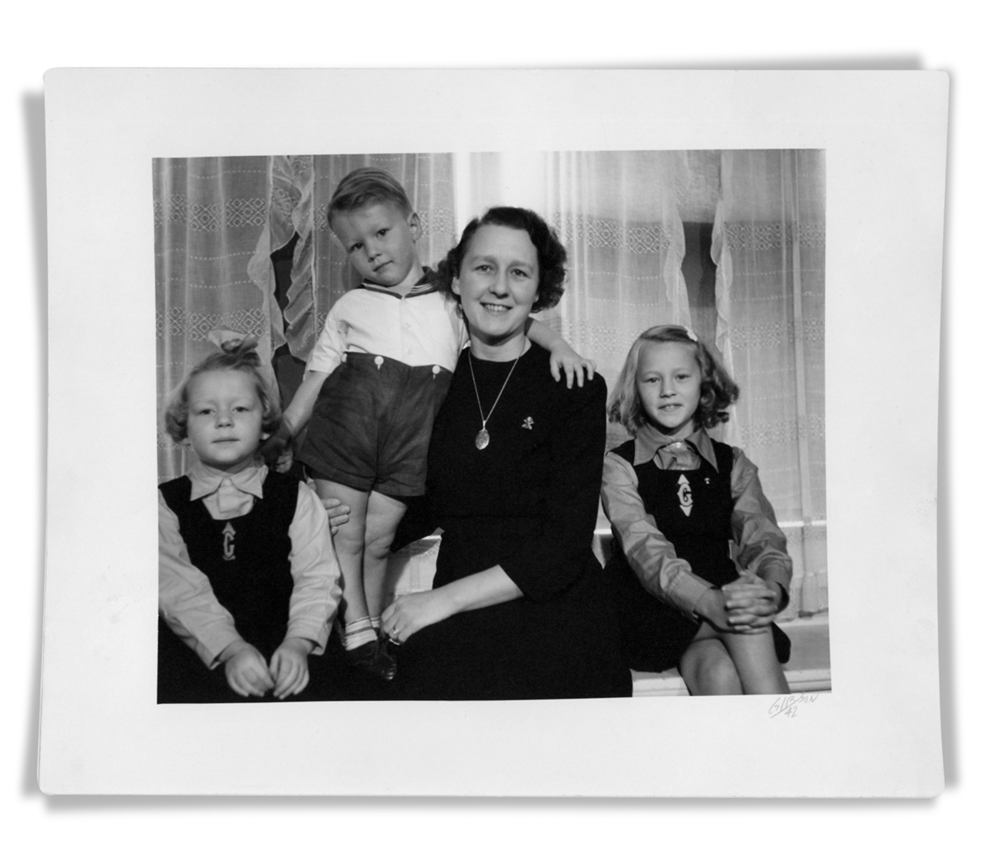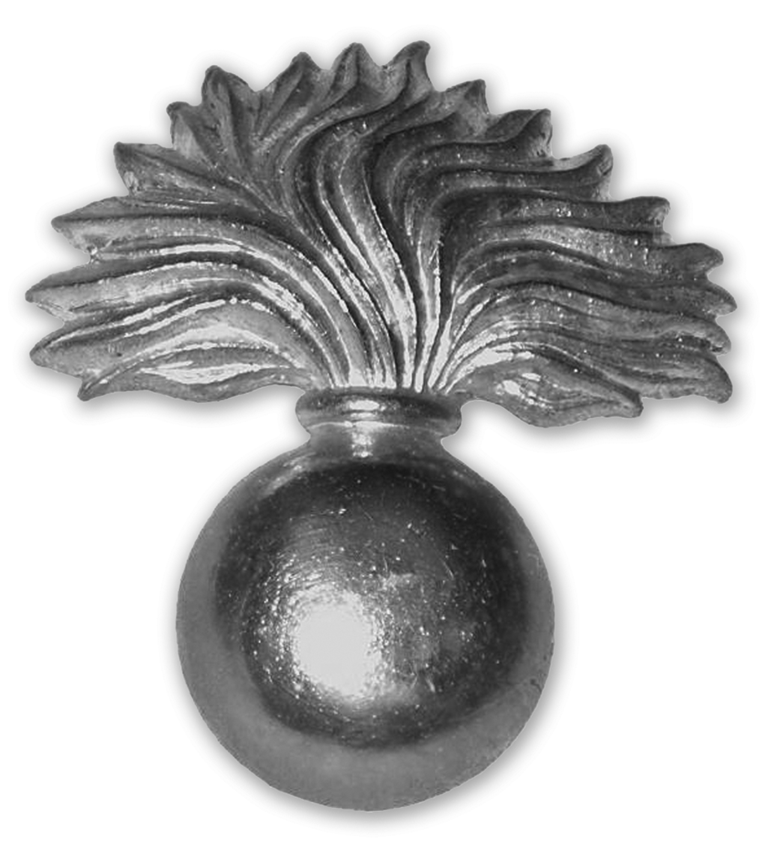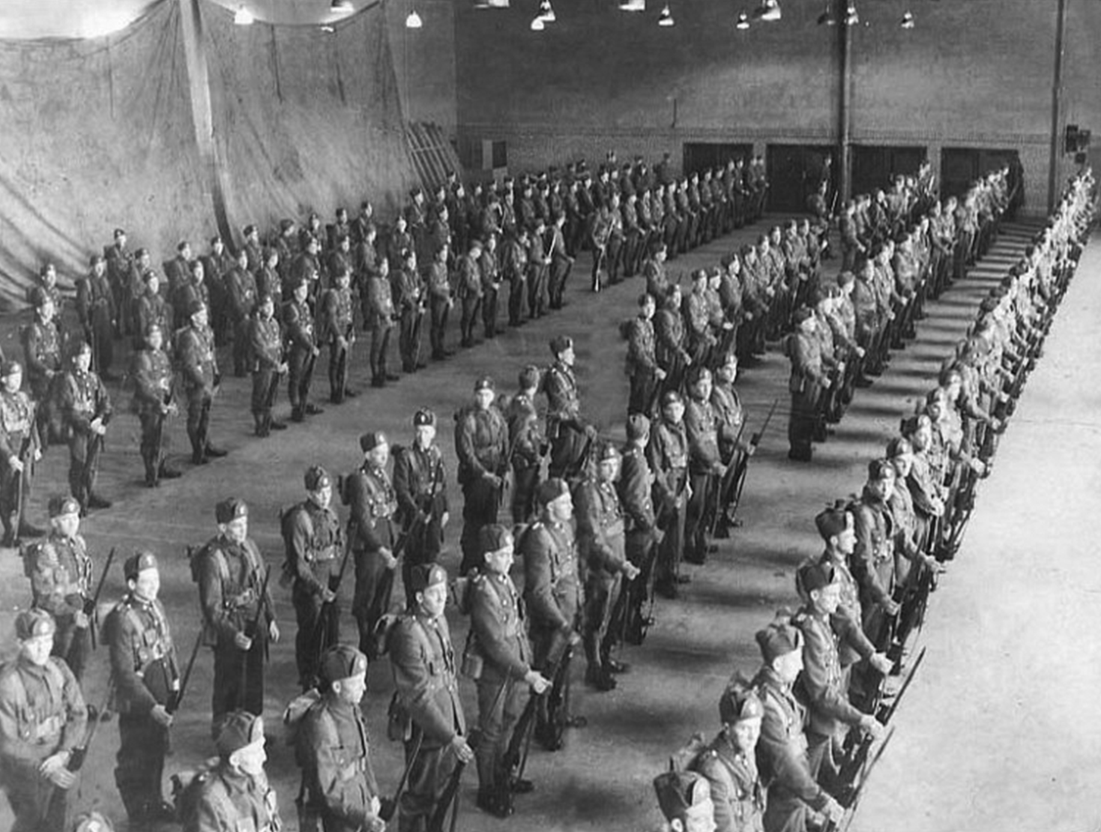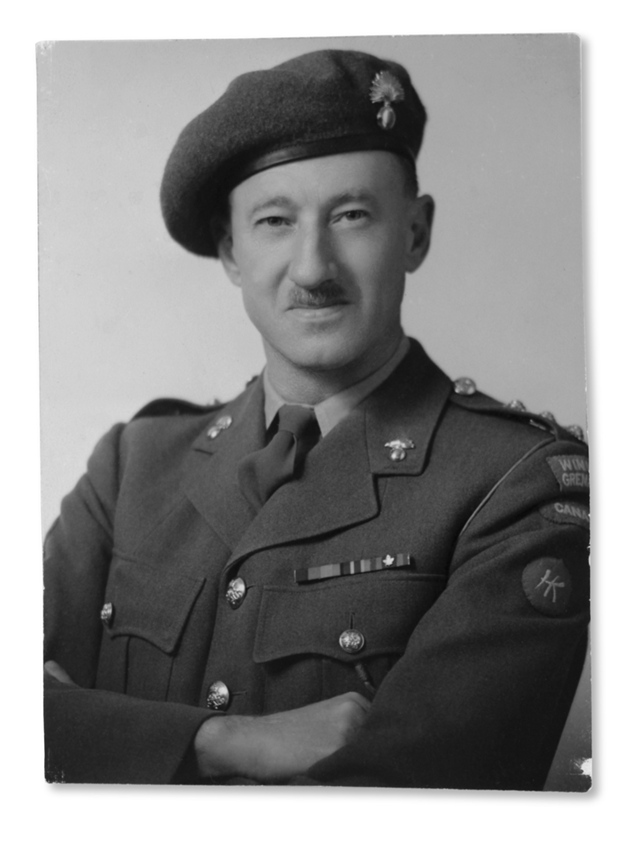Introduction

Barbara, Roger, Mother and me (at right) in 1942
DURING the dark days of World War II, my father, Lieutenant Frederick Victor Dennis, was an officer of the first battalion of the Winnipeg Grenadiers. In October 1941, this regiment was chosen to take part in the defense of the British colony of Hong Kong in anticipation of an attack by Japan. There was much political controversy over whether or not Hong Kong should be defended. Four battalions were already stationed in the colony - the Royal Scots and Middlesex regiments from England, and the 5/7 Rajputs and 2/1 Punjabis from India — but these were peacetime battalions, inadequately trained and ill-prepared for war. The few weapons they possessed were outdated and in poor repair, and because Britain was actively involved in the European conflict, no resources were available to properly equip the forces in Hong Kong. Both Lord Hastings Ismay, chief of staff to Prime Minister Winston Churchill, and Sir Geoffrey Northcote, the governor of Hong Kong, had advised the withdrawal of the British garrison from the colony in 190???.

The grenade, the badge of the Winnipeg Grenadiers; Mother and I wore miniature grenade pins.
However, the British commander of the troops in China, Major-General Edward Grasset, advised the War Office that reinforcement of the garrison would act as a deterrent to the Japanese. His petitions to both the Canadian and British governments were so persuasive that Churchill changed his mind.
On September 19, 1941, Canadian Prime Minister Mackenzie King received a telegram from the Dominions Office in London requesting Canada to provide one or two battalions for the defense of Hong Kong. The task of selecting these battalions fell to Colonel John K. Lawson, director of Military Training. He chose the Winnipeg Grenadiers and the Montreal Royal Rifles from a list of nine battalions that were considered insufficiently trained for combat. Lawson’s reasoning was that the best-trained troops should be sent to Europe, and that the Grenadiers and the Royal Rifles would have time for further training once they reached their destination.
Both battalions were under strength, necessitating the recruitment of new men during the two-week period between the warning for duty on October 9 and entrainment for Vancouver on October 25. Recruitment was hampered by a need for secrecy; the new men were chosen from those volunteering to serve in a semitropical climate, issued subtropical clothing and told that they would be boarding ship in Vancouver. Most of the recruits were young, some only sixteen or seventeen years of age, and all were inexperienced. The greenest men on the force had only thirty-eight days’ service when they left Vancouver, and only seventy-eight days at the time of the Japanese attack.
Even the regular troops were under-trained. They had spent the summer on garrison duty in Jamaica, where they had been supplied with anti-tank rifles and 3-inch mortars, but no ammunition had been available for either of these weapons. Following the call to duty in Hong Kong, the unit had one week set aside for its use at the St. Charles Rifle Range in Winnipeg. Further training was to be carried out during the long sea voyage. The men left Winnipeg by train on October 25 and arrived in Vancouver on October 27. They sailed that night aboard the British transport ship Awatea, ninety-six officers and 1,877 men on a vessel that had been built to accommodate far fewer passengers.

The Winnipeg Grenadiers in formation at Osborne Barracks, prior to leaving for Hong Kong
The troops were further handicapped by military bungling. The government had promised to provide 212 transport vehicles to be shipped along with the troops, but these did not arrive in Vancouver until after the ship had sailed. The vehicles eventually ended up in Manila, where they were used by American forces.
On November 16, the troops arrived in Hong Kong. They expected to undergo further combat training in the weeks ahead, but their time was cut short when war broke out on December 7.
After a courageous but one-sided battle against the Japanese, the Canadians were forced to surrender on Christmas Day, 1941. In spite of their defeat, the Grenadiers and Royal Rifles were proclaimed heroes. Many lives had been lost, and many more would be snuffed out during the next four years, during which those men who had survived the battle were interned in Japanese prison camps, forced to do hard labour, and fed a starvation diet.
My mother Lucy was a bright and talented woman who had taught music education for several years at the Provincial Normal School before her marriage to my father. Because married women were then not permitted to teach, she had been forced to resign after their wedding in December 1932. Following the outbreak of war, the Winnipeg School Board had passed a motion that Winnipeg teachers who were married to members of the armed forces would be retained or rehired for the duration of the war, but because Mother by then had three children to care for, she was unable to return to teaching.

Captain Frederick Victor Dennis of the Winnipeg Grenadiers post-war
The Home Front tells the story of our family during the four years we anxiously awaited the return of our father from war.
He finally came back to us in the fall of 1945, but the years of imprisonment had taken a heavy toll. He suffered from a variety of ailments, and died on April 1, 1969 at the age of sixty-seven.
Mother, unwilling to be separated from him once again, suffered a heart attack and died just months later on January 23, 1970.
She was just sixty-four.